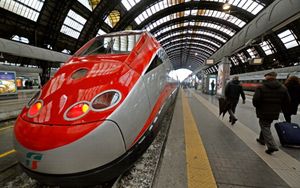(Finance) – A trip to Europe to closely observe the stations of the Old Continent and understand how to improve the accessibility of railway stations and their connection with the urban fabric. It also stopped at the Turin Porta Susa station, one delegation of Japanese engineers and architects from the Bureau of Urban Development of the Tokyo Metropolitan Government which after London, Frankfurt and Liège, has also decided to study the Turin airport closely.
Welcomed by the representatives of North West Area Stations Directorate and RFI Strategies Directoratethe leader of the Group’s Infrastructure Hub led by Luigi Ferraristhe Asian delegation was able to observe the station, its services offered and the way it integrates with the city of Turin and its different mobility systems. Increasingly conceived as mobility hubs, the station concept espoused and carried forward by RFI intends to understand the airports not only as transport hubs, but also as service hubs.
A vision also shared by the delegation of the Bureau of Urban Development of the Tokyo Metropolitan Government – we read on FsNews, the information portal of the Ferrovie dello Stato Group – to which the RFI representatives explained the importance of Turin Porta Susa AV not only in its role as a high-speed terminal, but also as a place that concretely implements, in a single space, the vertical integration of all transport and mobility services, from national and international long-distance, HS and non-HS , to regional, metropolitan, suburban and urban ones. The interconnection with the territory was completed with the burial of the railway link, which for Turin meant the full liberation from urban constraints and the maximum expression of its metropolitan systemtoday modern, fast and highly accessible, with the main national and European outlets.
Also relevant the green soul of the airportwith a photovoltaic system awarded at European level by Eurosolar 2012. Porta Susa is currently the station with the highest number of travelers in Piedmont and Valle d’Aosta and in the coming months it will be directly connected to Caselle airport, becoming plus a three hundred and sixty degree intermodal node.
